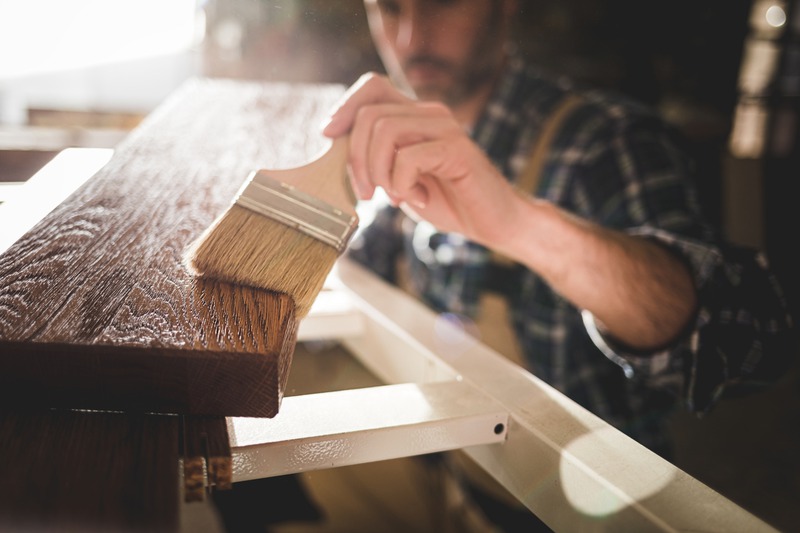Custom handmade furniture is a premium choice for homeowners who value quality, style, and durability. Although mass-produced furniture may offer cost savings and convenience, it often needs to catch up to the longevity that custom handmade furniture provides. Handmade furniture signifies art, tradition, precision, and a heightened level of detail and dedication, contributing significantly to its durability.
From the selection of superior materials to skilled craftsmanship, every aspect of custom handmade furniture is designed to stand the test of time. This perfectly embodies the adage that ‘you get what you pay for.’ Custom handmade furniture is typically more durable for several reasons:
1. Quality Materials
Custom handmade furniture, like dining tables Victoria Canada, often starts with a selection of high-quality materials. Artisans may source wood from reputable suppliers known for their sustainable practices or utilize reclaimed wood from old buildings, barns, or other structures. These materials are chosen for their durability, stability, and resistance to wear and tear. Unlike mass-produced furniture, which may use cheaper materials to cut costs, handmade pieces prioritize quality to ensure longevity.
2. Attention to Detail
Handcrafted furniture involves attention to detail that is often unmatched in mass production. Skilled artisans meticulously inspect each piece of wood, ensuring it is free from defects and adequately seasoned to prevent warping or cracking over time. Throughout the construction process, they carefully measure, cut, and shape each component to precise specifications, resulting in furniture that fits together seamlessly and is structurally sound.
3. Traditional Joinery Techniques
Custom furniture makers often rely on traditional joinery techniques passed down through generations. These methods, such as dovetail, mortise, tenon, and tongue and groove joints, create strong connections between pieces of wood without the need for excessive glue or hardware. By using joinery techniques that have stood the test of time, artisans can create solid and durable furniture capable of withstanding the rigors of everyday use.
4. Hand Finishing
Handcrafted furniture typically receives a hand-applied finish, such as oil, wax, or lacquer. Unlike mass-produced furniture, which may be finished using automated processes prioritizing speed and efficiency, hand-finishing allows artisans to apply multiple coats of finish carefully, ensuring thorough coverage and penetration into the wood fibers. This enhances the natural beauty of the wood and protects against moisture, scratches, and UV damage, further enhancing the furniture’s durability and longevity.
5. Customization for Strength
Custom furniture makers, like those specializing in display cabinets Victoria, have the flexibility to tailor the design and construction of each piece to maximize its strength and durability. They consider factors such as the intended use of the furniture, the weight it will need to bear, and the environmental conditions it will be exposed to. This customization may involve reinforcing certain areas of the furniture, using thicker or more robust materials, or incorporating additional support structures to ensure that the finished piece is capable of withstanding years of use without succumbing to wear and tear.
6. Repairability
One of the advantages of custom handmade furniture is its repairability. Because each piece is crafted with care and precision, it is often easier to repair than mass-produced items. If a component becomes damaged or worn over time, it can be replaced or repaired without compromising the overall integrity of the furniture. This ability to repair and maintain handmade furniture ensures that it remains functional and attractive for generations, further enhancing its durability and value.
7. Structural Integrity
Custom handmade furniture is often built with a strong emphasis on structural integrity. Artisans carefully consider the design and construction techniques to ensure that each piece is robust and able to withstand the stresses of everyday use. This includes weight distribution, load-bearing capacity, and reinforcement of critical joints and connections.
8. Attention to Environmental Factors
Handcrafted furniture makers consider the environmental conditions in which the furniture will be used. For example, suppose a piece is intended for outdoor use, such as a patio table or chair. In that case, special considerations may be made to protect it from exposure to sunlight, moisture, and temperature fluctuations. This could involve using weather-resistant materials, applying additional layers of protective finish, or incorporating design features to promote drainage and airflow.
9. Testing and Quality Control
Many custom furniture makers of coffee tables Victoria BC subject their pieces to rigorous testing and quality control measures to ensure durability and longevity. This may involve simulated stress tests, such as applying weight to various furniture parts or subjecting them to repeated use cycles. Any weaknesses or flaws discovered during testing can be addressed before the piece is finished and delivered to the customer, ensuring that only the highest quality furniture leaves the workshop.
10. Customer Education and Care Instructions
Custom furniture makers often provide customers with detailed care instructions to help maintain the durability of their pieces over time. This may include guidance on cleaning and maintenance, advice on avoiding familiar sources of damage, and recommendations for periodic inspections and repairs. By educating customers on how to care for their furniture properly, artisans empower them to take proactive steps to preserve its longevity and beauty for years to come.
Final Thoughts
The exceptional durability of custom handmade furniture is all down to careful craftsmanship and top-notch materials. These pieces, crafted meticulously by skilled artisans, are aesthetically appealing and structurally sound, thus ensuring a long lifespan that often surpasses mass-produced alternatives. Investing in such furniture is indeed an investment in long-term value, given the extended durability and the potential to become family heirlooms.





